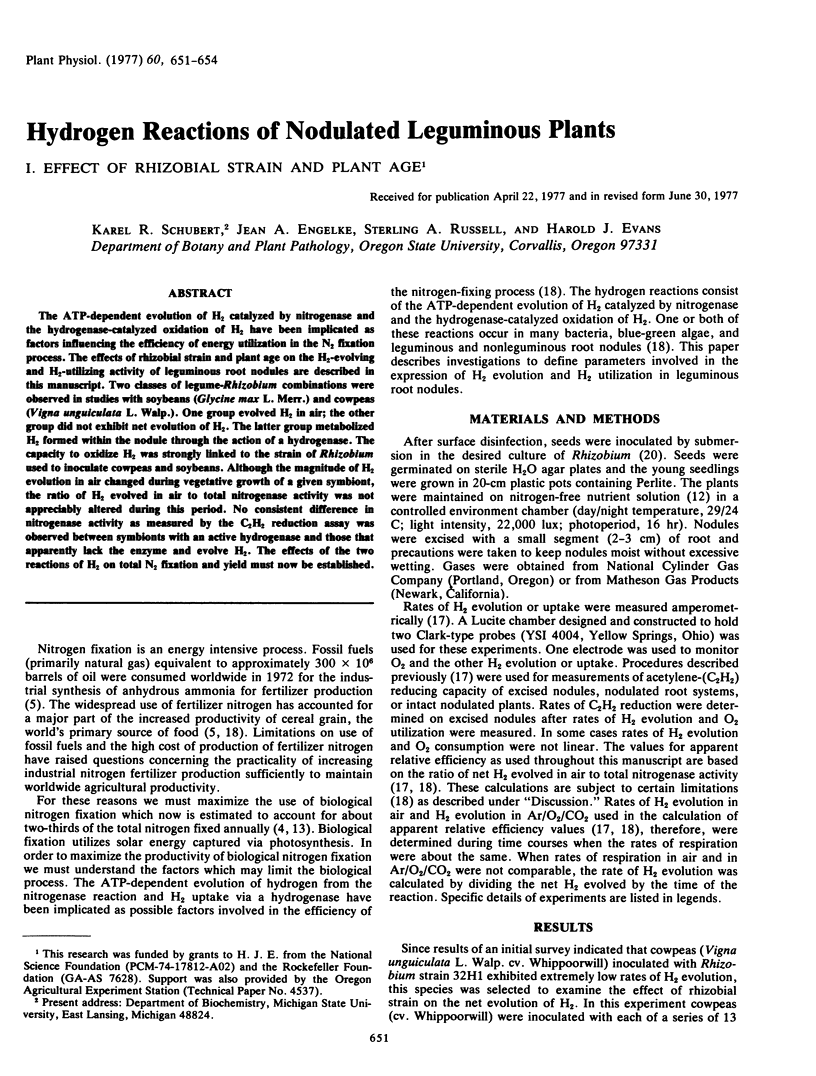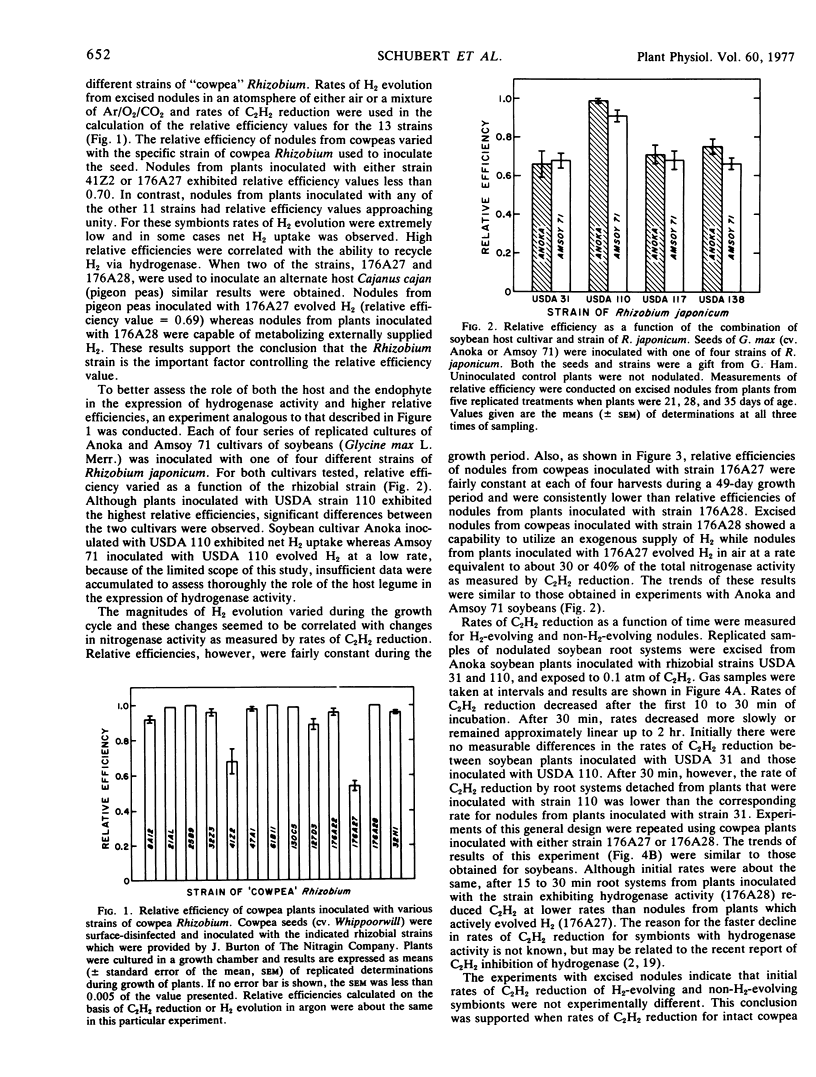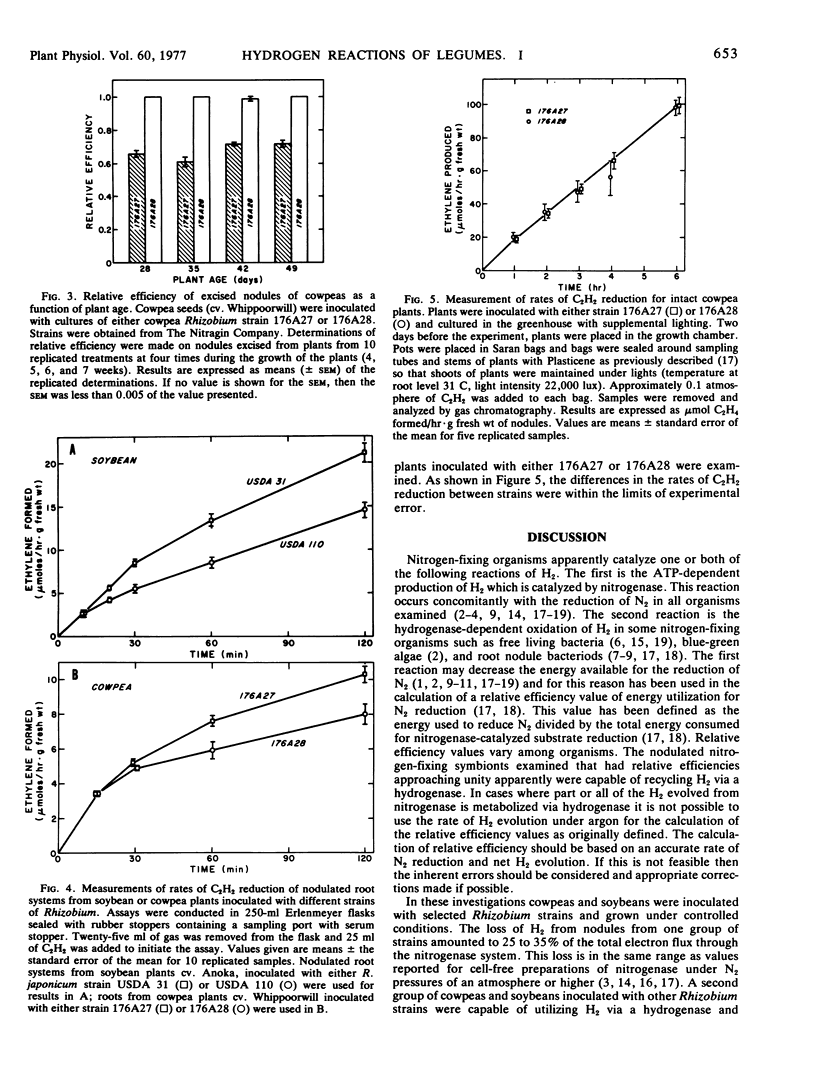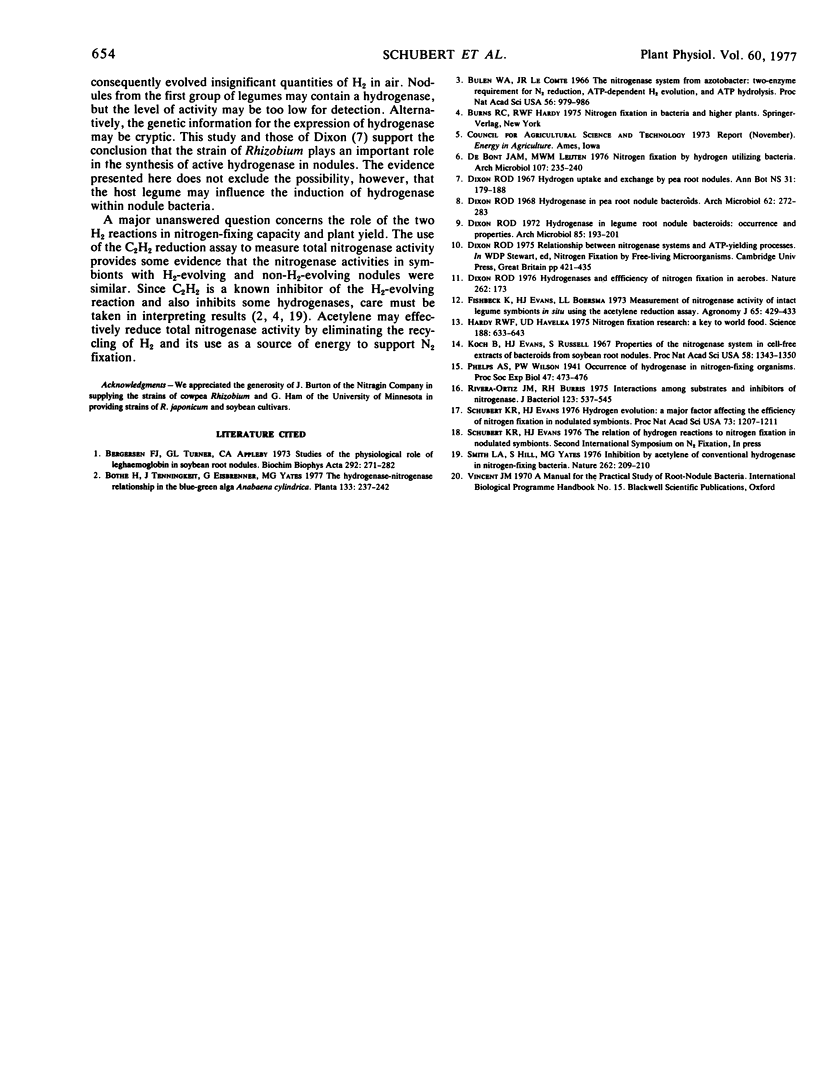Abstract
The ATP-dependent evolution of H2 catalyzed by nitrogenase and the hydrogenase-catalyzed oxidation of H2 have been implicated as factors influencing the efficiency of energy utilization in the N2 fixation process. The effects of rhizobial strain and plant age on the H2-evolving and H2-utilizing activity of leguminous root nodules are described in this manuscript. Two classes of legume-Rhizobium combinations were observed in studies with soybeans (Glycine max L. Merr.) and cowpeas (Vigna unguiculata L. Walp.). One group evolved H2 in air; the other group did not exhibit net evolution of H2. The latter group metabolized H2 formed within the nodule through the action of a hydrogenase. The capacity to oxidize H2 was strongly linked to the strain of Rhizobium used to inoculate cowpeas and soybeans. Although the magnitude of H2 evolution in air changed during vegetative growth of a given symbiont, the ratio of H2 evolved in air to total nitrogenase activity was not appreciably altered during this period. No consistent difference in nitrogenase activity as measured by the C2H2 reduction assay was observed between symbionts with an active hydrogenase and those that apparently lack the enzyme and evolve H2. The effects of the two reactions of H2 on total N2 fixation and yield must now be established.
Full text
PDF



Selected References
These references are in PubMed. This may not be the complete list of references from this article.
- Bergersen F. J., Turner G. L., Appleby C. A. Studies of the physiological role of leghaemoglobin in soybean root nodules. Biochim Biophys Acta. 1973 Jan 18;292(1):271–282. doi: 10.1016/0005-2728(73)90271-5. [DOI] [PubMed] [Google Scholar]
- Bulen W. A., LeComte J. R. The nitrogenase system from Azotobacter: two-enzyme requirement for N2 reduction, ATP-dependent H2 evolution, and ATP hydrolysis. Proc Natl Acad Sci U S A. 1966 Sep;56(3):979–986. doi: 10.1073/pnas.56.3.979. [DOI] [PMC free article] [PubMed] [Google Scholar]
- De Bont J. A., Leijten M. W. Nitrogen fixation by hydrogen-utilizing bacteria. Arch Microbiol. 1976 Apr 1;107(3):235–240. doi: 10.1007/BF00425333. [DOI] [PubMed] [Google Scholar]
- Dixon R. O. Hydrogenase in legume root nodule bacteroids: occurrence and properties. Arch Mikrobiol. 1972;85(3):193–201. doi: 10.1007/BF00408844. [DOI] [PubMed] [Google Scholar]
- Dixon R. O. Hydrogenase in pea root nodule bacterioids. Arch Mikrobiol. 1968;62(3):272–283. doi: 10.1007/BF00413898. [DOI] [PubMed] [Google Scholar]
- Hardy R. W., Havelka U. D. Nitrogen fixation research: a key to world food? Science. 1975 May 9;188(4188):633–643. doi: 10.1126/science.188.4188.633. [DOI] [PubMed] [Google Scholar]
- Koch B., Evans H. J., Russell S. Properties of the nitrogenase system in cell-free extracts of bacteroids from soybean root nodules. Proc Natl Acad Sci U S A. 1967 Oct;58(4):1343–1350. doi: 10.1073/pnas.58.4.1343. [DOI] [PMC free article] [PubMed] [Google Scholar]
- Rivera-Ortiz J. M., Burris R. H. Interactions among substrates and inhibitors of nitrogenase. J Bacteriol. 1975 Aug;123(2):537–545. doi: 10.1128/jb.123.2.537-545.1975. [DOI] [PMC free article] [PubMed] [Google Scholar]
- Schubert K. R., Evans H. J. Hydrogen evolution: A major factor affecting the efficiency of nitrogen fixation in nodulated symbionts. Proc Natl Acad Sci U S A. 1976 Apr;73(4):1207–1211. doi: 10.1073/pnas.73.4.1207. [DOI] [PMC free article] [PubMed] [Google Scholar]
- Smith L. A., Hill S., Yates M. G. Inhibition by acetylene of conventional hydrogenase in nitrogen-fixing bacteria. Nature. 1976 Jul 15;262(5565):209–210. doi: 10.1038/262209a0. [DOI] [PubMed] [Google Scholar]


